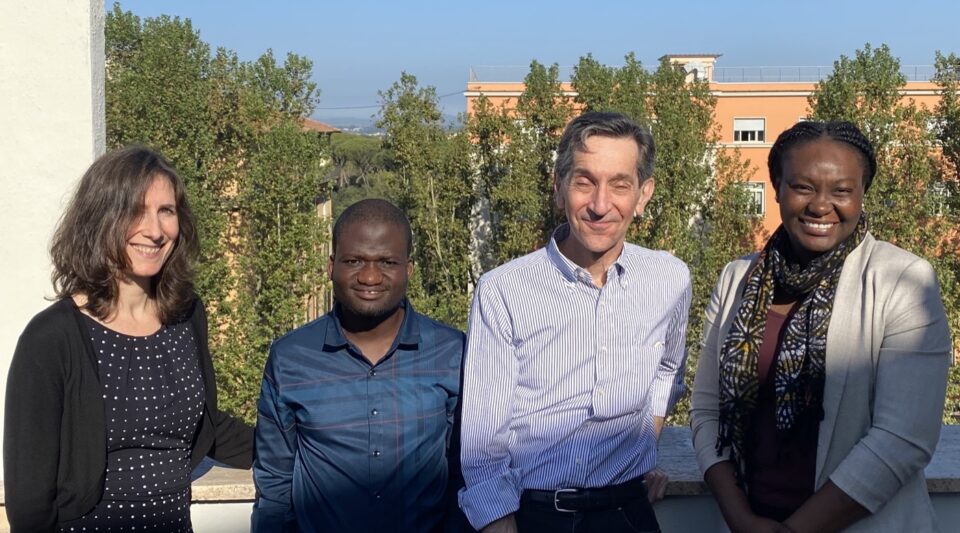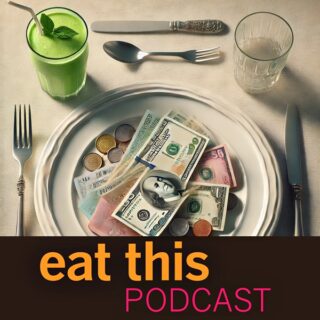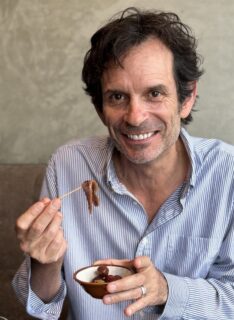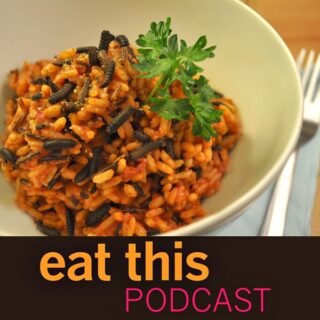
Podcast: Play in new window | Download (Duration: 26:46 — 24.6MB)
Subscribe: Google Podcasts | Spotify | Android | RSS | More
 For a long time people have suspected that there is a kind of logic to what people buy as they have a bit more to spend on food. First, they change from coarse grains — things like sorghum or millet — to fine grains, wheat and rice, maybe corn. Then they switch up to protein from animal-sourced foods. This logic was even considered something of a law, Bennett’s Law, after Merrill Bennett, the agricultural economist who formulated the idea in the early 1940s. But it wasn’t really a law, because no-one had actually studied income and food purchases under controlled conditions.
For a long time people have suspected that there is a kind of logic to what people buy as they have a bit more to spend on food. First, they change from coarse grains — things like sorghum or millet — to fine grains, wheat and rice, maybe corn. Then they switch up to protein from animal-sourced foods. This logic was even considered something of a law, Bennett’s Law, after Merrill Bennett, the agricultural economist who formulated the idea in the early 1940s. But it wasn’t really a law, because no-one had actually studied income and food purchases under controlled conditions.
Now someone has, with the first empirical test of Bennett’s Law. For Marc Bellemare, the lead author, the research, “changes your view of how the world works”.
Notes
- Income and the Demand for Food among the Poor, by Marc F. Bellemare, Eeshani Kandpal, and Katherina Thomas can be downloaded from JSTOR.
- Marc Bellemare has a website where he explains difficult things clearly. You might also like to listen to his other episodes on the podcast.
- As it happens, just last week the USDA published a chart showing Engels’ Law at work in the US.
- Here’s the transcript.


 Let’s assume that people understand what they ought to eat to keep themselves healthy over the course of their lives and that the nutritious food to deliver good health is available in the market. More than one in three of the world’s people simply cannot afford a healthy diet. We know because the Food Prices for Nutrition team at Tufts University has developed tools that allow countries to use data that most of them are already collecting (to compile their Consumer Price Index) and from them calculate the cost of a healthy diet. The results have been alarming for some policy-makers, with encouraging results in at least one country.
Let’s assume that people understand what they ought to eat to keep themselves healthy over the course of their lives and that the nutritious food to deliver good health is available in the market. More than one in three of the world’s people simply cannot afford a healthy diet. We know because the Food Prices for Nutrition team at Tufts University has developed tools that allow countries to use data that most of them are already collecting (to compile their Consumer Price Index) and from them calculate the cost of a healthy diet. The results have been alarming for some policy-makers, with encouraging results in at least one country.
 The Spanish are the world’s greatest anchovy eaters. They get through about 2.69 kilograms each a year, more than a tin a week. So you might be forgiven for thinking that anchovies have always been a part of Spanish cuisine. Not so, with the exception of the good people of Malaga, who developed a thing for deep-fried fresh anchovies. The rest of Spain resolutely ignored anchovies as food, spreading them instead on their fields as fertiliser. All that started to change in the late 19th century, when Italians, expert in the ways of salting fish, fetched up on the Basque coast to buy up all the fish that nobody else wanted. Among them, Giovanni Vella, who invented the modern tin of anchovy fillets in olive oil.
The Spanish are the world’s greatest anchovy eaters. They get through about 2.69 kilograms each a year, more than a tin a week. So you might be forgiven for thinking that anchovies have always been a part of Spanish cuisine. Not so, with the exception of the good people of Malaga, who developed a thing for deep-fried fresh anchovies. The rest of Spain resolutely ignored anchovies as food, spreading them instead on their fields as fertiliser. All that started to change in the late 19th century, when Italians, expert in the ways of salting fish, fetched up on the Basque coast to buy up all the fish that nobody else wanted. Among them, Giovanni Vella, who invented the modern tin of anchovy fillets in olive oil. 


 If only we could get over our squeamishness, insects can save the planet, banish hunger, protect the rainforests and reduce the climate catastrophe. At least, that’s what article after article tell us as they sing the praises of feeding our food waste to insects like the larvae of the black soldier fly. Insects can grow 5000-fold in 12 days, producing prodigious quantities of protein in less than 100th the space of soya beans.
If only we could get over our squeamishness, insects can save the planet, banish hunger, protect the rainforests and reduce the climate catastrophe. At least, that’s what article after article tell us as they sing the praises of feeding our food waste to insects like the larvae of the black soldier fly. Insects can grow 5000-fold in 12 days, producing prodigious quantities of protein in less than 100th the space of soya beans.